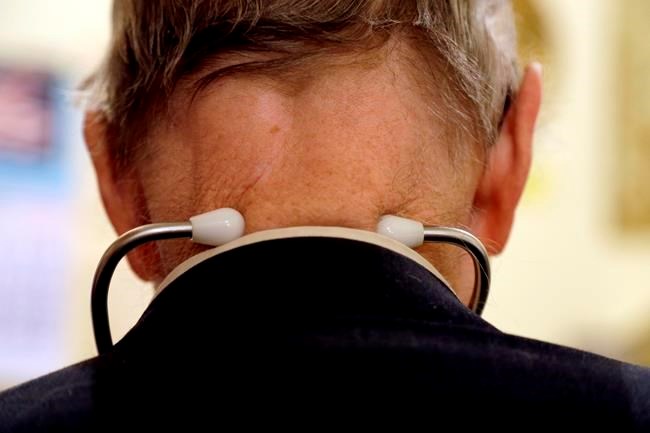TORONTO — A shortage of family doctors in the province is only going to get worse if burnout and growing administrative burdens are not addressed, the Ontario Medical Association is warning.
As of March 2022, there were 2.2 million Ontarians who didn't have a regular family doctor, an increase of 450,000 people in just two years, the association says, and an OMA survey of its members suggests that 40 per cent of physicians are considering retiring in the next five years.
"Family medicine is in crisis and the negative impact this is having on our patients continues to get worse and worse," Dr. David Barber, chair of the OMA's section on general and family practice said Wednesday.
"It's so important to realize that family doctors are the gatekeepers to the health-care system, and when a patient doesn't have access to a family doctor they really have nowhere to go and oftentimes end up in (the emergency department)."
Burnout was identified in the OMA survey as one of the top issues facing the health-care system, as well as in a survey released Wednesday by the Ontario College of Family Physicians. In addition to the 2.2 million Ontarians without a family doctor right now, another 1.7 million Ontarians have a family doctor who is aged 65 or older.
Family doctors who soon plan to leave the profession report that they are overwhelmed with administrative work, the college said. They report spending an average of 19.1 hours per week on administrative tasks such as filling out forms.
OMA past president Dr. Rose Zacharias said one of the issues is that different medical information systems are not integrated, so if a physician needs a patient's information from a hospital, pharmacy, specialist, or walk-in clinic, for example, it takes a lot of legwork.
"It is so cumbersome and tedious," she said Wednesday. "Over time, it wears the physician down and we know that doctors cite this administrative burden as the reason why they're exiting their practices."
As well, she said it would be helpful to have a centralized referral system for specialists, rather than having family doctors rely on personal networks and knowing who is taking new patients and who has shorter waits.
A shortage of family doctors is felt particularly acutely in rural northern Ontario.
Dr. Sarah Newberry, assistant dean of physician workforce strategy at the Northern Ontario School of Medicine, said primary care doctors in those communities are often also the emergency department doctors and the hospital inpatient doctors, such as in Marathon, Ont., where she practices.
Northern Ontario is currently actively recruiting for more than 100 rural generalist physicians, an increase of 10 per cent in two years, Newberry said. When a rural northern community faces a primary care shortage, it puts additional pressure on the ER, she said.
"The reality is that for most small communities in northern Ontario, the only two options that they have is the primary care office or the emergency department, so there isn't a walk-in clinic down the street, and there aren't other options," she said.
"The distance to the next nearest community that might have available services is often too prohibitive for patients to be able to make that drive. Communities are often separated by an hour or more."
Melanie Goulet, recruitment co-ordinator for health professionals at Notre-Dame Hospital in Hearst, Ont., said in a recent interview that as of July 1, about 4,000 people in the community of 5,000 will be without a family doctor.
Losing just one doctor puts additional pressures on the ER and makes it harder to fill those physician shifts, she said.
"Our (ER) numbers have increased ... not counting COVID," Goulet said. "Before we used to see maybe from 20 to 30 patients in a 24-hour period, now it's like from 40 up. Some days can be really crazy."
A spokesperson for Health Minister Sylvia Jones noted in a statement that the government has added 14 undergraduate and 22 post-graduate seats at the Northern Ontario School of Medicine and invested $32 million there for resident salaries and benefits, medical education and training and a First Nations residency program. As well, she said the government funded nearly 80 new physicians through the Northern and Rural Recruitment and Retention Initiative.
"Our government recognizes that residents of northern Ontario face unique health care realities compared to people living in other regions of the province," Hannah Jensen wrote.
"That is why we are connecting northern Ontarians to convenient care, closer to home by making investments and expanding programs to improve access to physician services across the north."
This report by The Canadian Press was first published May 31, 2023.
Allison Jones, The Canadian Press

